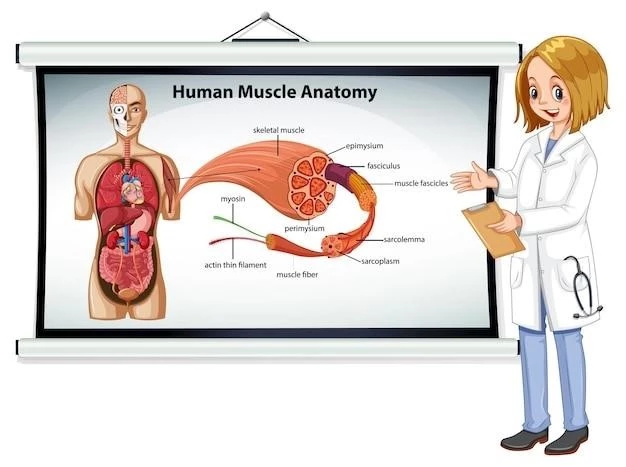Introduction to Congenital Ichthyosis Biliary Atresia
Congenital ichthyosis biliary atresia is a rare genetic disorder affecting infants‚ characterized by skin abnormalities and liver disease related to bile ducts. Understanding this complex condition is crucial for accurate diagnosis and appropriate medical care.
Definition and Overview
Congenital Ichthyosis Biliary Atresia is a rare genetic disorder that combines the characteristics of congenital ichthyosis and biliary atresia‚ affecting both the skin and liver. It is an inherited condition resulting from mutations in genes that lead to impaired skin development and liver complications. Infants with this disorder present with skin abnormalities such as thick‚ scaly skin‚ and liver issues like bile duct obstruction. Understanding the interplay between these manifestations is crucial for accurate diagnosis and management of the condition. Specialized medical care focusing on skin and liver health is essential to address the symptoms and complications associated with this complex disorder. Additionally‚ treatment options like liver transplant may be considered in severe cases to improve the overall prognosis.
Relationship Between Congenital Ichthyosis and Biliary Atresia
Congenital Ichthyosis and Biliary Atresia are distinct yet interconnected conditions found in the rare disorder known as Congenital Ichthyosis Biliary Atresia. The relationship between them lies in the simultaneous presence of skin abnormalities characteristic of congenital ichthyosis and liver complications associated with biliary atresia. This unique combination results from underlying genetic mutations affecting both skin development and bile duct formation. The interplay between these two components underscores the complexity of the disorder‚ necessitating a comprehensive approach to diagnosis and management. Understanding the intricate relationship between congenital ichthyosis and biliary atresia is crucial for providing targeted medical care to address the diverse symptoms and complications presented by individuals affected by this rare condition.
Understanding the Genetic Basis
The genetic basis of Congenital Ichthyosis Biliary Atresia involves mutations in genes that impact skin and liver development. These genetic changes contribute to the complex manifestations of this rare disorder.
Inherited Nature of the Condition
Congenital Ichthyosis Biliary Atresia is an inherited disorder passed down through genetic mutations from parents to their offspring. The genetic basis of this condition means that individuals with affected parents have a higher risk of developing the disorder due to the transmission of specific genetic variants. Understanding the inherited nature of Congenital Ichthyosis Biliary Atresia is essential for genetic counseling‚ early detection‚ and intervention to manage the symptoms and complications associated with this rare disease. Genetic testing and counseling play a crucial role in assessing the risk of recurrence in families affected by this complex genetic disorder.
Mutation in Genes Leading to the Disorder
Congenital Ichthyosis Biliary Atresia is caused by mutations in genes responsible for skin development and bile duct formation. These genetic alterations disrupt normal physiological processes‚ leading to the characteristic symptoms of the disorder. Specific genes implicated in the pathogenesis of Congenital Ichthyosis Biliary Atresia play a crucial role in regulating skin integrity and liver function. Understanding the precise genetic mutations associated with this condition is vital for accurate diagnosis‚ prognosis‚ and the development of targeted treatment strategies to address the complex manifestations of this rare disorder.
Clinical Presentation and Diagnosis
The clinical presentation of Congenital Ichthyosis Biliary Atresia involves skin abnormalities and liver complications‚ necessitating specialized diagnostic procedures for accurate identification and management of this rare disorder in affected individuals.
Symptoms of Congenital Ichthyosis Biliary Atresia
Individuals with Congenital Ichthyosis Biliary Atresia may experience a range of symptoms including thick‚ scaly skin‚ impaired liver function‚ jaundice‚ and poor weight gain. Skin abnormalities such as dry‚ rough patches and liver-related issues like bile duct obstruction are hallmark features of this rare disorder. Other symptoms may include itching‚ dark urine‚ and fatigue‚ highlighting the multisystem effects of Congenital Ichthyosis Biliary Atresia on the affected individuals. Early recognition of these symptoms is crucial for timely diagnosis and implementation of appropriate medical care to manage the complex manifestations of this condition.
Diagnostic Procedures Involved
Diagnosing Congenital Ichthyosis Biliary Atresia typically involves a combination of clinical evaluation‚ imaging studies such as ultrasound and MRI to assess liver and bile duct abnormalities‚ skin biopsies for evaluating skin changes‚ and blood tests to identify liver dysfunction markers. A comprehensive diagnostic approach is necessary to confirm the presence of both skin abnormalities and liver complications in affected individuals; Genetic testing may also be employed to identify specific mutations contributing to this rare disorder. These diagnostic procedures play a crucial role in establishing an accurate diagnosis‚ developing a tailored treatment plan‚ and initiating timely interventions to manage the complex symptoms associated with Congenital Ichthyosis Biliary Atresia.
Potential Complications and Risks
Congenital Ichthyosis Biliary Atresia presents potential complications including skin abnormalities and liver disease such as bile duct obstruction‚ highlighting the complex nature and diverse risks associated with this rare disorder.
Skin Abnormalities Associated with the Disorder
Congenital Ichthyosis Biliary Atresia manifests with skin abnormalities characterized by thick‚ scaly‚ and dry patches affecting the entire body. The skin may appear rough‚ cracked‚ and exhibit increased vulnerability to infections. These dermatological manifestations are prominent features of the disorder‚ impacting the physical and emotional well-being of affected individuals. Management of skin abnormalities in Congenital Ichthyosis Biliary Atresia requires a multidisciplinary approach involving dermatologists‚ geneticists‚ and other healthcare specialists to address the complex challenges associated with the skin manifestations of this rare genetic condition.
Liver Disease and Bile Duct Complications
Congenital Ichthyosis Biliary Atresia is associated with liver disease and bile duct complications‚ including bile duct obstruction and impaired liver function. The progressive nature of these liver manifestations can lead to jaundice‚ liver scarring‚ and potential liver failure. Complications such as cholestasis‚ portal hypertension‚ and cirrhosis may arise‚ necessitating specialized medical interventions to manage the hepatic implications of this rare disorder. Close monitoring of liver function and timely interventions‚ including liver transplant in severe cases‚ are crucial in addressing the complex liver-related complications in individuals affected by Congenital Ichthyosis Biliary Atresia.

Treatment Options Available
Management of Congenital Ichthyosis Biliary Atresia involves specialized medical care to address skin and liver complications. Treatment modalities may include medications‚ skin care regimens‚ and in severe cases‚ liver transplant to improve prognosis.
Specialized Medical Care for Managing Symptoms
Individuals with Congenital Ichthyosis Biliary Atresia require specialized medical care focusing on managing skin abnormalities and liver disease. Dermatological treatments to alleviate skin dryness‚ scaling‚ and infections are combined with hepatological interventions targeting liver function and bile duct issues. Collaborative efforts among dermatologists‚ hepatologists‚ and other healthcare professionals are essential to provide comprehensive care tailored to the specific needs of patients with this rare genetic disorder. Regular monitoring‚ supportive therapies‚ and individualized treatment plans are key components of managing the diverse symptoms associated with Congenital Ichthyosis Biliary Atresia.
Liver Transplant as a Treatment Modality
In severe cases of Congenital Ichthyosis Biliary Atresia with end-stage liver disease or failure‚ liver transplant may be considered as a treatment option. This complex procedure involves replacing the diseased liver with a healthy donor liver to restore proper liver function and alleviate bile duct complications. Liver transplantation offers a potential cure for individuals with advanced liver involvement in Congenital Ichthyosis Biliary Atresia‚ providing a chance for improved quality of life and long-term disease management. Close post-transplant monitoring and adherence to immunosuppressive medications are crucial to ensure graft success and optimal outcomes in patients undergoing liver transplant for this rare disorder.
Palliative and Supportive Care
Individuals with Congenital Ichthyosis Biliary Atresia benefit from palliative care to manage symptoms and supportive interventions to enhance quality of life. Comprehensive support is essential in addressing the complexities of this rare disorder.
Importance of Palliative Care in Rare Disorders
Palliative care plays a crucial role in managing the symptoms and improving the quality of life for individuals with rare disorders like Congenital Ichthyosis Biliary Atresia. It focuses on providing relief from pain‚ discomfort‚ and addressing the emotional and psychological needs of patients and their families. In the context of a complex condition such as Congenital Ichthyosis Biliary Atresia‚ palliative care offers holistic support‚ symptom management‚ and enhances overall well-being. The interdisciplinary approach of palliative care teams can help individuals with this rare disorder navigate the challenges and complexities associated with their condition‚ ensuring dignity‚ comfort‚ and quality of life throughout the disease course.
Supportive Care to Enhance Quality of Life
Supportive care is essential in enhancing the quality of life for individuals affected by Congenital Ichthyosis Biliary Atresia. This comprehensive approach focuses on addressing the physical‚ emotional‚ and social needs of patients‚ fostering a supportive environment that promotes overall well-being. Supportive care interventions may include counseling‚ physical therapy‚ nutritional support‚ and psychosocial services to help individuals cope with the challenges associated with this rare disorder. By providing tailored support and resources‚ supportive care aims to improve the quality of life‚ promote resilience‚ and empower patients and their families to navigate the complexities of Congenital Ichthyosis Biliary Atresia with dignity and compassion;
Prognosis and Life Expectancy
The prognosis of Congenital Ichthyosis Biliary Atresia varies based on the severity of symptoms and response to treatment. Close monitoring and specialized care can positively impact the life expectancy of individuals affected by this rare disorder.
Impact of the Disorder on Life Expectancy
The impact of Congenital Ichthyosis Biliary Atresia on life expectancy can be significant‚ particularly in cases with severe liver complications. The progression of liver disease and potential need for interventions like liver transplant can influence the overall prognosis. Access to specialized care‚ early diagnosis‚ and appropriate management of both skin and liver manifestations are critical factors that can impact the longevity and quality of life for individuals affected by this complex and rare disorder. Multidisciplinary approaches aimed at addressing the diverse challenges presented by Congenital Ichthyosis Biliary Atresia play a crucial role in optimizing outcomes and improving the life expectancy of affected individuals.
Factors Influencing the Prognosis
Multiple factors influence the prognosis of individuals with Congenital Ichthyosis Biliary Atresia‚ including the extent of skin abnormalities‚ severity of liver disease‚ response to treatments‚ presence of complications like cholestasis and cirrhosis‚ access to specialized medical care‚ and the timeliness of interventions such as liver transplant. Early diagnosis‚ comprehensive management strategies‚ and ongoing support from a multidisciplinary healthcare team are crucial in determining the prognosis of this rare disorder. The individual variability in disease presentation and response to therapy underscores the importance of tailored approaches and continuous monitoring to optimize outcomes and quality of life for those affected by Congenital Ichthyosis Biliary Atresia.
